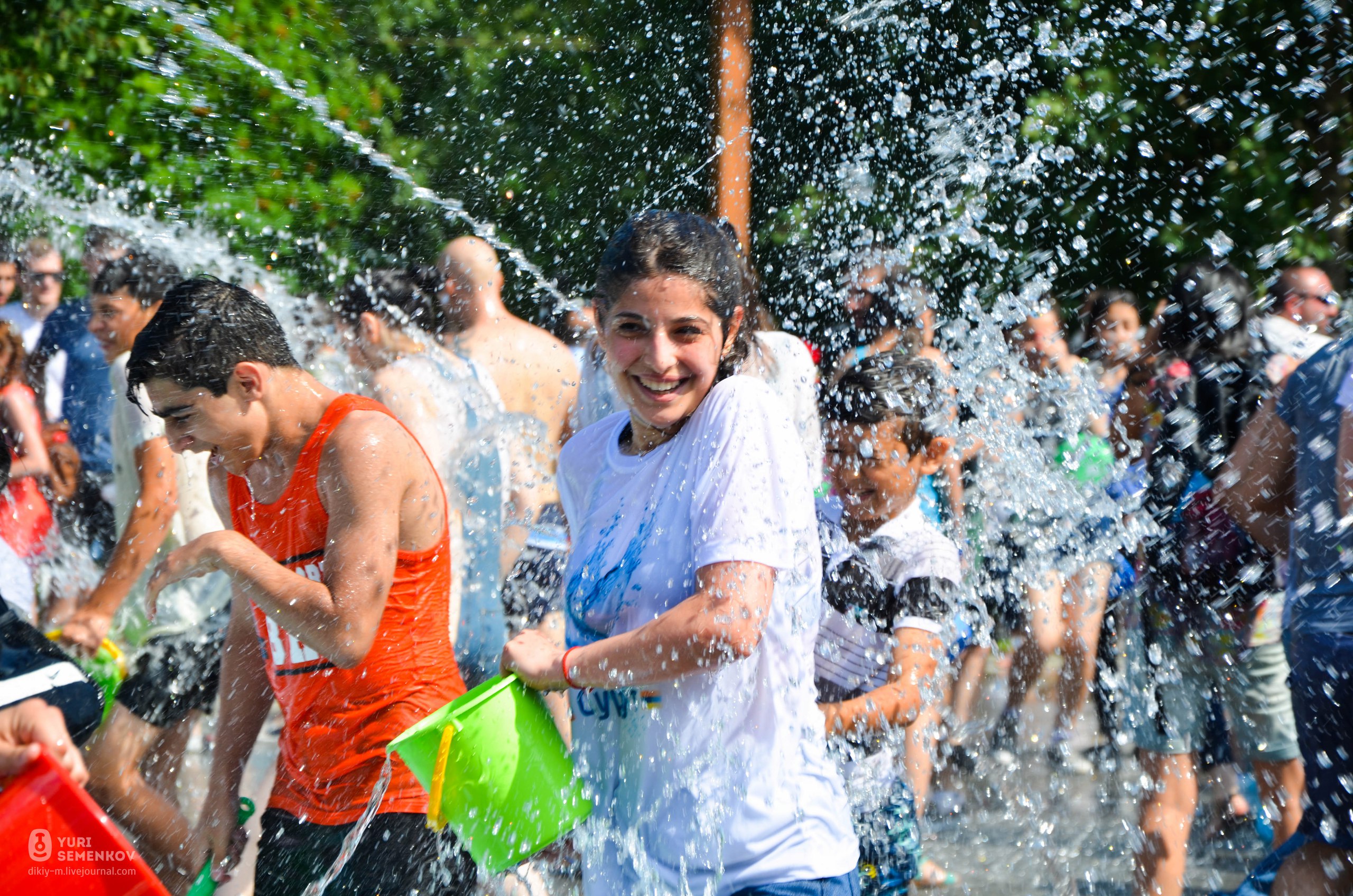If you want to spend a summer day carefree, cheerfully and make it unforgettable, you should definitely come to Armenia in July for Vardavar festival. Since the Armenian Apostolic church celebrates the holiday of the Transfiguration of the Lord, and the date is changeable, it’s necessary to check the date beforehand. The holiday date is changeable and may be celebrated on Sunday among 28.06-01.08.
Vardavar is a very colorful festival as fruit blessing is held on this day. But the most important element of Vardavar is water. Everyone, without exception, pours water on each other, because on this day it cleanses everyone from sins. The more water flows, the cleaner the world becomes. And do not even think you can escape from the fate of being watered. On the contrary, get involved in this joyful festival, where children and adults, with perky laughter, cheerful cries and screams of those running away, pour buckets and mugs of water on each other and all people and vehicles passing by.
But what does Vardavar symbolize? Vardavar has its roots in deep, pagan antiquity. There are several versions of this holiday, but all of them are associated with beauty, love, fruits, roses, pigeons and, of course, miraculous water. The most common one is a celebration dedicated to the goddess of love and beauty Astghik, the beloved of the god of thunder, fire, war, dragon-slayer Vahagn. Kidnapped by the god of death and saved by Vahagn, she gave people love in the form of water poured onto the earth and multi-colored rose petals scattered over it. The name Astghik is associated with the worship of water. After the meeting of Astghik and Vahagn, the land was plentifully watered by rain, thereby nourishing the fields and gardens. Whether the holiday is dedicated to the goddess of beauty Astghik, or to the goddess of fertility Anahit, both of them symbolized love, and therefore on this day they either gave roses or scattered rose petals, decorating the temples of these goddesses. And depending on the legend, the name of the holiday is interpreted as “showering with roses”, “bright rose” or translated from the Hittite “watering”. In addition, on this day, it is customary to release pigeons, which already symbolize the flood and Noah, who released the dove, so that he would bring the news that the water was already subsiding.
As you see there is a clear interweaving and transition from pagan to Christian holidays. In rural areas this holiday is celebrated especially solemnly. After a fun, people sit down at tables set with traditional dishes and drinks to continue the celebration of Vardavar accompanied by national songs and dances.


Comment (0)